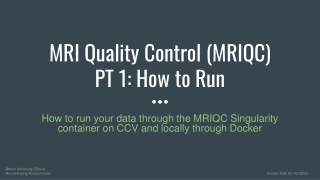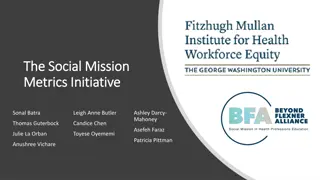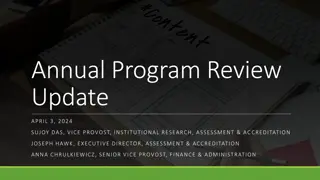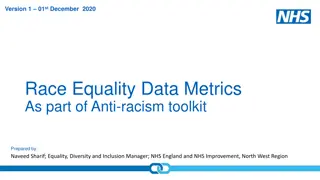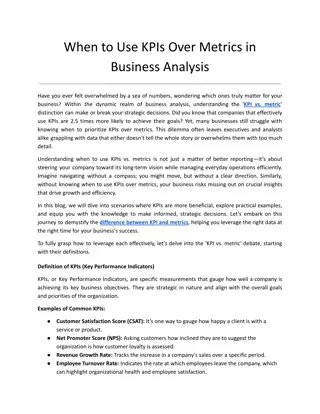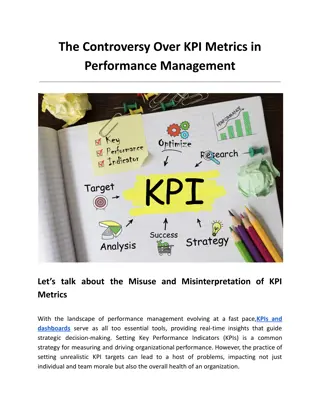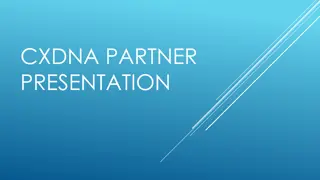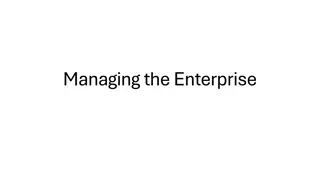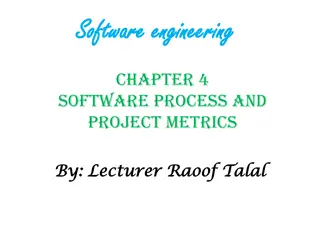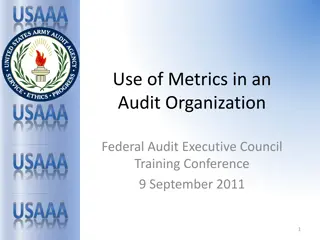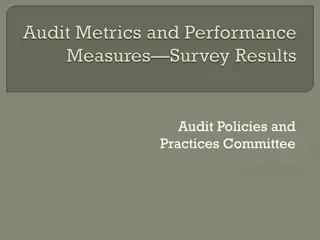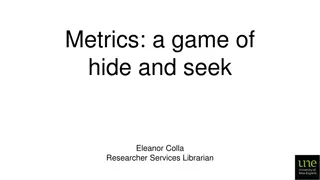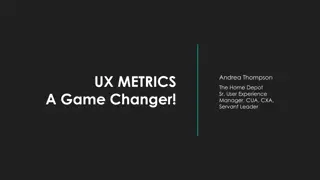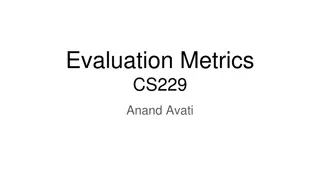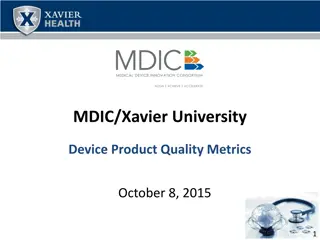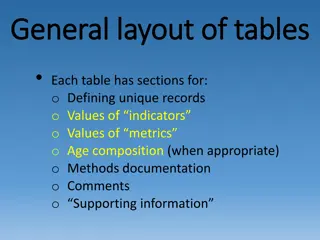Responsible Use of Publication Metrics in Research Assessment
Explore the responsible usage of publication metrics in research evaluation for hiring, promotion, grants, and papers. The session discusses the flaws of metrics, alternatives, critical analysis, and advocacy supported by DORA and the Leiden manifesto. Learn about the types of metrics used, providers like Web of Science, Scopus, and Dimensions, and tools such as Altmetric and ORCID. Discover how metrics should complement expert judgment rather than replace it.
Download Presentation

Please find below an Image/Link to download the presentation.
The content on the website is provided AS IS for your information and personal use only. It may not be sold, licensed, or shared on other websites without obtaining consent from the author. Download presentation by click this link. If you encounter any issues during the download, it is possible that the publisher has removed the file from their server.
E N D
Presentation Transcript
Using publication metrics responsibly Who is this session for? Anyone assessing research quality when hiring, promoting, reviewing grant or papers AND, therefore Anyone being reviewed Why now? DORA The San Francisco Declaration on Research Assessment has been signed by SGUL REF2021 Discussion, education, resources and policy on this topic supports Environment What? Today 25 mins slides (available on SGUL website) and discussion lead Jodi Lindsay Disclosure Jodi is SGUL Academic Lead for REF2021 at SGUL and Chair of the Publishing Committee for Microbiology Society (and therefore will mention REF and might be softer on society publishers and harder on commercial publishers )
Why do we use publication metrics? An indicator of research quality They are useful but flawed There is increasing literature, discussion and advocacy to identify flaws and alternatives.
Critical analysis and advocacy around publication metrics DORA The San Francisco Declaration on Research Assessment https://sfdora.org/ We should develop better ways to assess research quality and be clear about what we are using Leiden manifesto - http://www.leidenmanifesto.org/ We should not cede decision-making to the numbers. quantitative information must not be allowed to morph from an instrument into the goal Nature (2015) 520:429-31 The Metric Tide https://responsiblemetrics.org/the-metric-tide/ There are powerful forces whipping up the use of metrics; metrics are open to misunderstanding and create perverse incentives Research Funders very keen for academics to be more discerning consumers of metrics. (e.g. REF, Plan S) Consensus of all Metrics should support, not supplant, expert judgement Journal impact factors (JIF) are being used inappropriately
What do publication metrics aim to measure? Three key types - 1. Journal quality e.g. journal impact factor (JIF) 2. Individual article quality e.g. Citation count 3. Individual researcher quality e.g. h-index
Who provides publication metrics and why? Web of Science/Clarivate - https://wok.mimas.ac.uk/ Subscription model, supplies journal impact factors (JIF), citation counts, h-index, etc. Scopus/Elsevier similar to WoS (SGUL does not have a subscription) Dimensions - new Google Scholar - (FREE, larger database from trawling the web, easy to use , limited researcher control, supplies citation counts, h-index) Altmetric (measures twitter, downloads, blogs, media, etc) Other tools ORCID identifies which papers belong to which researchers; required by funders, FREE https://orcid.org/ CRIS SGULs system for deposition to meet open access requirements of funders https://cris.sgul.ac.uk/login.html ResearchGate networking site Most are subscription services, charging libraries/companies a fee (similar to journals) Questions for you - As researchers, are metric providers delivering the services we need? - Are they open and transparent about how their metrics are calculated?
1. Journal Quality The most widely used metric is the Journal Impact Factor (JIF). There is a correlation between quality of a paper and the JIF of the journal it is published in This is the most widely used publication metric, although it is often used inappropriately Supplier of metric is Web of Science. Originally a tool used to sell journal subscriptions to libraries Useful because journal publishers care about JIF and make sure papers are searchable and accessible and citable Calculated as : Journal impact factor (for year X) = Citations in year X for papers published in years X-1, X-2 Number of papers published in years X-1, X-2 (Note that other suppliers of JIF metrics are using a different database of papers, and therefore the numbers are not directly comparable)
Open and transparent : Improved since 2018 Now much more verifiable evidence for scores. Example here is Nature Comms Citation distributions are skewed, especially by outliers Mean vs median, articles vs reviews vs other Full dataset available
Issues with JIF The quality of the the journal is not the quality of any individual paper published in that journal. Articles in journals with high JIF can have low citation counts (eg. Nature Comms example, >140 papers cited zero times) Researchers waste a lot of time and energy trying to publish in journals with the highest JIF Editorial boards can be cliquey or powerful Biases very field dependent smaller fields have smaller JIFs Journal publishers can game JIF e.g. delay the publication date of papers, publish small numbers of selected papers and/or use cascade journals , etc. Publishers charge APC and subscription fees. Result - REF2021 says JIF should not to be used to assess quality of papers DORA and Leiden manifestos strongly recommend that we do not rely on JIF to assess quality of papers Alternative metrics for measuring journal quality (not the quality of papers) SNIP adjustment for field of publication (Scopus, CWTS) 3 year JIF, 5 year JIF, immediacy index, cited half-life, etc. basket of metrics Questions for you - Why do we need journal metrics? - Do we judge a paper differently because of the journal it is published in, and why? - What are the dangers around choosing to publish in a journal because of its JIF?
2. Individual paper quality The gold standard metric is Citation count. There is a correlation between citation count and the importance and quality and impact on the field of a paper Suppliers There is no gold standard supplier of Citation count. Web of Science and Google Scholar are both useful but you must state the database being used as they are very different Open and transparent? Improving Calculated : The total number of times a publication has been cited in that database. Increases over time. For example - DOI: 10.1093/GBE/EVU214 published in 2014 Year Citations in WoS Core Citations in Google Scholar 0 2014 0 2015 6 12 2016 14 37 2017 33 46 2018 39 60 2019* 45 69 top 5% - 10% of field JIF 4.229 4.096 3.979 3.940 3.726 top 20% - 30% of field
Issues with citation Not adjusted for the field Dependent on publication date (annoying to continually update manually) Slow Reward sensational rather than accurate papers. Eg. Wakefield MMR paper cited > 1200 times. Biases in citations due to - gender, institution, nationality, journal (also true for JIF) Citations may recognise good marketing - presentations at conferences, social media, etc. Self citation Alternative metrics REF2021 has carefully considered this issue, and chosen to use citation scores from WoS, with adjustment for field and date (Panel A) Adjustment is via tables of citation scores for the top 1%, 5%, 10%, 25% and 50% of papers per field https://www.ref.ac.uk/guidance/citation-and-contextual-data-guidance/ (not a long term solution) BUT REF2021 does not rely on metrics alone. All papers must be read and assessed by panels based on originality, significance, rigour Reference/reading The Metric Tide Questions for you How important is citation score when judging paper quality?
3. Individual Researcher Quality Can this be done with a metric?? The most commonly used is h-index There is a correlation between h-index and the numbers of quality papers produced by a researcher Supplier Standard is h-index from Web of Science (Google Scholar also used) Calculated The number of publications n by the author, that have been cited at least n times. Dependent on database used and changes over time Dependent on up-to-date ResearcherID in WoS, (via ORCID or CRIS) *If you are being returned in the REF2021 you must be using CRIS and have an ORCID account
Example of variation B-9565-2008/0000-0002-5219-1625 Web of Science Google Scholar Issues with h-index 2013 25 28 2015 28 33 2017 34 42 (of these, 44 were published before 2013) 2019* 41 50 Very slow They measure the past, not necessarily the present. Age is heavily favoured. Favours those that are middle author/honorary author on a lot of papers Self citations! Alternatives? Adjust for self-citation and author position using alternatives in tables? See - https://www.nature.com/articles/d41586-019-02479-7 Question for you is an h-index ever useful? For assessing young academics?
Additional resources available - The UK Forum for Responsible Research Metrics. https://www.universitiesuk.ac.uk/policy-and-analysis/research-policy/open-science/Pages/forum-for-responsible- research-metrics.aspx How to choose a journal to submit your papers to https://thinkchecksubmit.org/ St George s Library Blog - https://stglibrary.wordpress.com/ https://www.sgul.ac.uk/about/our-professional-services/information-services/library/researchers/publication- metrics CRIS Help - https://cris.sgul.ac.uk/information.html Reviewers of your research may search your publications for metrics indicators make sure they are accurate. ORCID & CRIS are essential; Consider ResearcherID (WoS), Google Scholar
Alternatives to metrics what is good practice? (no easy answers yet) See https://sfdora.org/good-practices/ Research funder s have policies on publication metrics. e.g. Wellcome Trust ask for your top papers with 50 words of text on their significance and your contribution. See DORA for links to - CRUK, European Commission, UKRI, Wellcome University policies e.g. UCL reject the use of certain quantitative indicators, in particular those that apply at the level of journal... https://www.ucl.ac.uk/human-resources/sites/human-resources/files/ucl-130418.pdf Questions for you if applying for funding or a position/promotion, can you demonstrate quality without relying on metrics or journal titles? - if you are reviewing for a funder or university, how do you ensure you are using metrics responsibly?
Publication metrics and Psychology Metrics judge Unfairly Understanding the details and pitfalls of metrics reduces their unfair use and gives us opportunity to develop better approaches
Summary For reviewers Publication metrics are one tool that can be used to judge quality of a journal, paper or individual. But they are not the only way to judge quality. Biases should be considered, especially when there is good evidence some metrics are biased Only use metrics that are supported by reliable data. A basket of publication metrics is better than one If you don t know how a metric works, or its limitations, don t use it. Similarly, don t assume one journal is better than another if you don t know why. We should be clear about how quality is judged, e.g. in job adverts, promotion criteria For Reviewees - It pays to keep your publication metrics up-to-date and to know which metrics might be used to your best advantage Think of alternative ways to demonstrate the quality of your work We should all be thinking about ways to assess research and publication quality responsibly
Next steps - Today - start the Discussion - What metrics do we want to use at SGUL and when? - Reviewers - Do we need a policy at SGUL when hiring and promoting, awarding grants? How would we ensure everyone knows and adheres to the policy? - Reviewees - What metrics and metric strategies are useful on CVs? Grant applications to external funders? - What resources would be useful? Do we need more training? What do we need from the Library? Providers - As researchers, are metric providers delivering the services we need? Are they open and transparent about how their metrics are calculated? JIF - Why do we need journal metrics? Do we judge a paper differently because of the journal it is published in, and why? What are the dangers around choosing to publish in a journal because of its JIF? Citations - How important is citation score when judging paper quality? h-index - Is an h-index ever useful? For assessing young academics? Alternatives- if applying for funding or a position/promotion, can you demonstrate quality without relying on metrics or journal titles? - if you are reviewing for a funder or university, how do you ensure you are using metrics responsibly?





